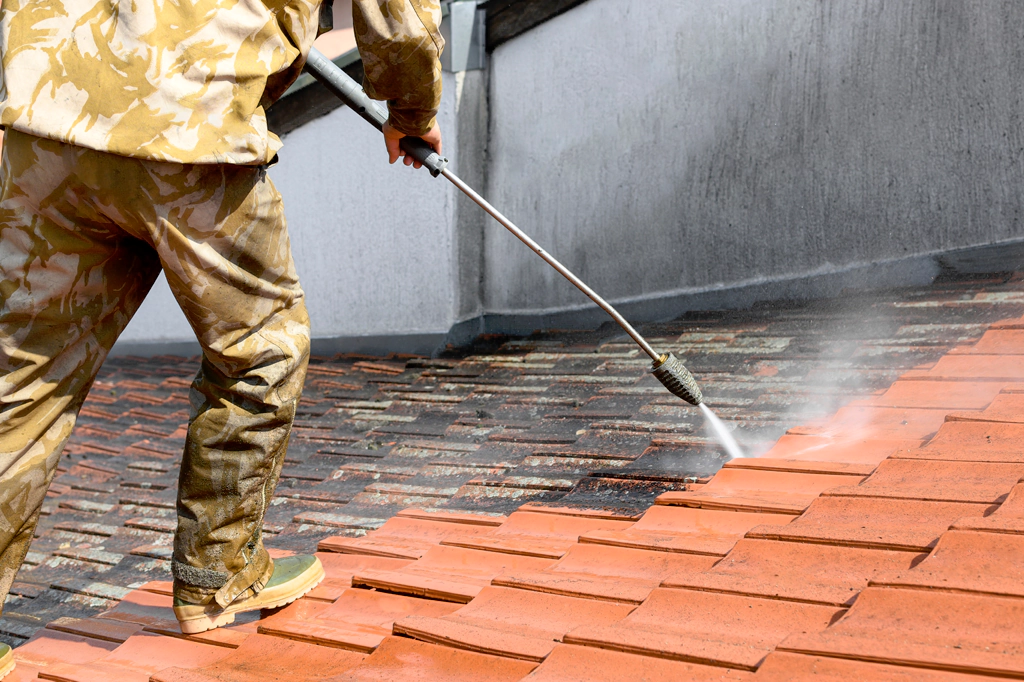Roofs play a vital role in maintaining the strength and durability of any structure. These endure numerous environmental and weathering elements, preventing damage to the building. However, exposure to moisture, organic debris and shade can invite unwanted growth over time. Out of which, lichen is one of the most common. While it may seem harmless at first, this slow-growing organism can cause more than just cosmetic damage if left untreated.
Let’s explore how you can remove lichen effectively and maintain the health and appearance of your roof.
Understanding Lichen
Lichen forms as a result of a symbiotic partnership between fungi and algae. This partnership thrives in shady, damp places, mostly found in the roof valleys, penetrations, gutters, downpipes, and below the solar panels. It may appear pale green, grey, white, yellow, orange and sometimes even black. If you touch it, it can feel rough, smooth or prickly, depending on its type.
For non-professionals, it’s easy to miss lichen during routine checks. Therefore, one must watch out for the following signs to confirm its presence:
- Slightly raised patches on otherwise flat tiles
- Pale blotches that refuse to wash off
- Slower drainage or pooling near roof edges
- Sections of the roof that look oddly aged
Why Removing Lichen Matters?
Ignoring signs of lichen existence allows it to seep into the surface and lead to:
- Gradual weakening of roof materials over time
- Unwanted moisture retention that welcomes mould
- Unsightly staining that affects the visual appeal
- Interference with proper rainwater flow
- Reduced overall property value and street appeal
Timely action is the only way to prevent major maintenance later.
When is the Best Time to Clean?
Clear skies and dry weather create ideal conditions for cleaning. Mild days during spring or early autumn are the safest and most effective. Dry tiles respond better to treatment, and the lack of wind or rain allows the cleaning solution to do its job.
How to Remove Lichen from Your Roof?
Taking the right approach prevents more harm than good. Here’s a simple yet effective method:
1. Start with a Thorough Inspection
Walk around the property or use binoculars to assess from ground level. Identify high-growth areas and check for any cracked or fragile tiles. Mark zones where lichen appears thicker.
2. Gently Brush the Surface
Mild growth often responds well to soft-bristle brushing. It’s important to avoid forceful scrubbing or hard materials.
- Brush lightly in a circular motion
- Wear gloves and secure footwear
- Begin at the highest point and move downwards
This reduces the chance of spreading debris under the tiles.

3. Apply a Purpose-Made Cleaning Solution
Choose an eco-friendly product that targets organic matter, like lichen. Avoid using bleach or generic cleaners not meant for roofs.
- Spray the treatment evenly over the affected areas
- Let it rest for a few hours or as directed
- Allow the product to break down lichen naturally
No need to rinse straight away—nature will help loosen it.
4. Rinse with Care
Once the product has taken effect, rinse the surface with low-pressure water. Avoid high-pressure jets as they might chip tiles or damage the underlayers.
- Always direct the hose down the slope
- Maintain a gentle, even flow
- Keep the angle shallow to preserve coatings
Let the roof dry naturally after rinsing.
5. Re-treat if Needed
In some cases, a second round may be necessary. Always leave time between treatments and avoid overdoing it in a short period.
Tips to Keep Lichen from Returning
Once cleaned, you can stop it from making a comeback. A few smart practices go a long way:
- Cut back any overhanging branches to boost sunlight
- Keep gutters clear to avoid standing water
- Book a maintenance wash every year or so
- Apply a long-lasting treatment that resists growth
Being consistent helps preserve the look and strength of the roof.
Safety First During Roof Work
Even single-storey roofs can pose risks. Therefore, it’s essential to always prioritise safety with the following measures:
- Use ladders that are stable and secured properly
- Wear shoes with a grip and always move slowly
- Avoid roof work on windy or wet days
- Use safety harnesses where necessary
- Call someone to assist or monitor from below
No view is worth a fall, so always be cautious when opting for DIY cleaning.
Why DIY Isn’t Always Enough?
Home cleaning methods might seem simple, but they often miss deeper growth. Scrubbing too hard can wear tiles out, while using incorrect cleaners may discolour or corrode materials.
Professionals bring the right balance of strength and sensitivity. Their treatments are made for different roof types and tackle the problem at its source. What may take a full weekend at home can be resolved in hours with expert care.
When to Bring in the Professionals?
Sometimes, it’s best to leave it to those with experience. Consider expert help when:
- Lichen covers a large section or has been there for years
- The roof is made of delicate tiles that need gentle handling
- You notice leaks or damp marks indoors
- You’re not confident using cleaning chemicals
- You want to protect the roof with post-clean treatments
They also help uncover hidden issues during the process, saving you future trouble.
Concluding Words
Roofs aren’t just about structure, they carry the face of your home. Clean tiles reflect more light, retain insulation better, and keep the interior dry and sound. By adding roof cleaning to your maintenance routine, you reduce risks and improve home value.
Start with a small change and turn it into a long-term habit. Your home will thank you.
Exterior Clean: Trusted Cleaners Amongst Home and Business Owners Across Melbourne
Our team understands each surface, each tile and each challenge. We bring tailored solutions that bring back your roof’s charm while extending its life. Our experts will provide you with a customised solution that meets your requirements.
